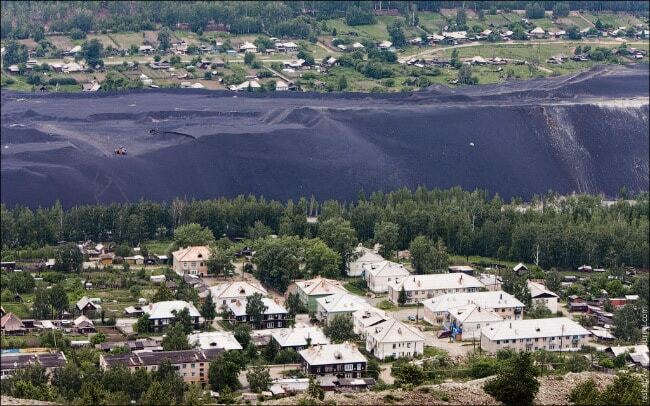A modern hardware store will offer something that would have opened your mouth decades ago in surprise, for example, liquid wallpaper and nails. If nails are just construction glue, which is not inferior in reliability to metal, then with wallpaper it is somewhat more complicated. Those who have not come across them have a hard time imagining what it is and how the mixture will stick to the wall. In fact, their application resembles the leveling of walls with plaster, the mass hardens after drying.

Liquid wallpaper is a common type of apartment decoration, which is well deserved.
Advantages and disadvantages of liquid wallpaper
Content
- Advantages and disadvantages of liquid wallpaper
- Types of liquid wallpaper
- Liquid wallpaper ideas in rooms
- Liquid wallpaper in the kitchen
- Liquid wallpaper in the living room
- Liquid wallpaper in the children's room
- Liquid wallpaper in the bedroom and other rooms
- Choosing a color palette for liquid wallpaper
- Making drawings with liquid wallpaper in the interior of rooms
- Photo of the design of liquid wallpaper in the interior of the room
- VIDEO: Liquid wallpaper - how to choose and apply to walls.
- 50 design options for rooms with liquid wallpaper:
Fine powder with dye and adhesive binder, which is diluted with water according to the instructions before work, is usually called wallpaper precisely because of cellulose.

Externally, the coating can resemble a smoothly plastered wall or have various patterns that are created with your own hands from the same material.
Liquid wallpaper is gaining popularity deservedly due to its advantages:
- They hide small irregularities in the walls, so the surface is perfectly flat.
- In contrast to rolls, which have docking points, they look like a solid canvas along the entire perimeter.
- For application work, less space is needed than when gluing a roll, the process takes place without waste and glue stains.
- They give the opportunity for a unique decor: the application of large compositions on the entire wall, the choice of their colors. For comparison, when gluing rolls, you have to be content with the chosen print throughout the room.
- There is no need to adjust the pattern between the canvases and cut out window and door openings, as in traditional ones, so there are no unnecessary scraps and more economical consumption per square meter.
- The service life is higher due to the fact that the damaged area can be cut out, dissolved in water and reapplied. On paper products, it will look like a patch, but here the coating will even out and will not be conspicuous.

The material, in essence, differs from conventional wallpaper coverings and is more related to decorative plaster.
With all the advantages, liquid wallpaper is not yet common as traditional for the following reasons:
- High cost. Traditional ones have a wider range of prices, which is called for any wallet. Liquid ones are more expensive, on average about 1000 rubles and more per kg of dry matter. Approximate consumption: 1 kg for 4-5 square meters. The finer the particles in the mixture, the higher the cost.
- More limited choice of colors. The assortment is getting larger, but in comparison with the usual ones it still loses.
- Cannot be washed. You can paint the surface with acrylic varnish, but this will deprive it of air permeability.
- If there was a stain of a contrasting color under the decorative layer, over time it will show through from the outside.
- You need to dry it for an average of 2-3 days, depending on the time of year.
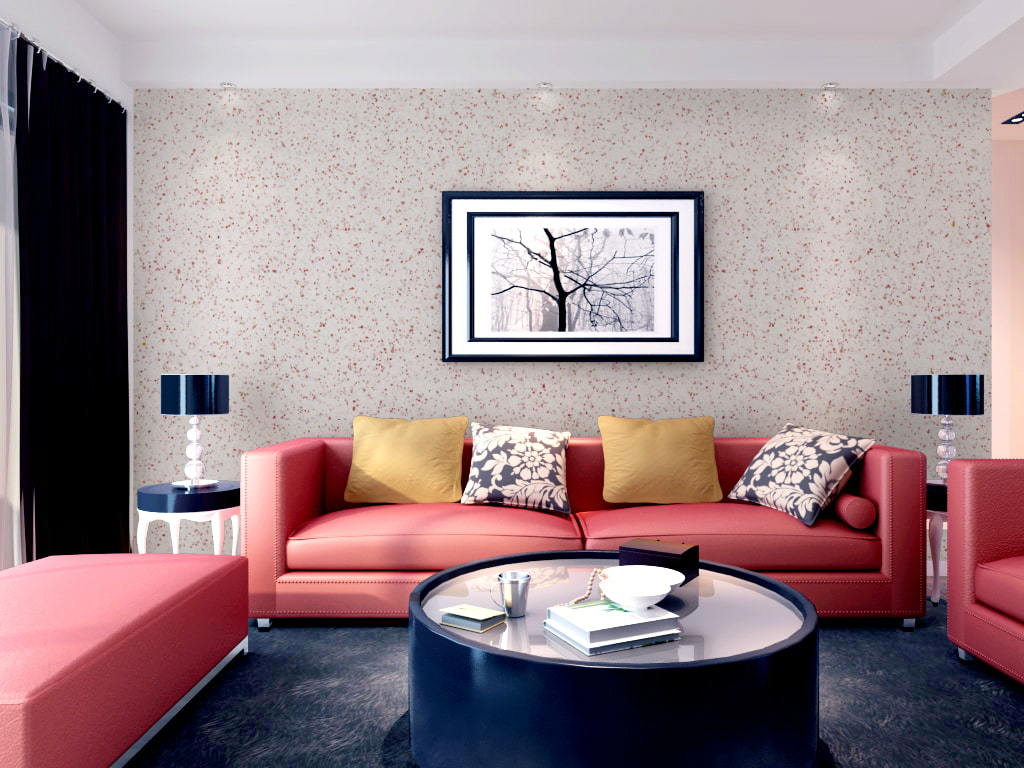
Liquid wallpaper is purchased in dry form, after which it is diluted with water before use.
Important! The mixture is suitable for application to walls, ceilings, structures of any shape.
Types of liquid wallpaper
Outwardly, this finishing material resembles decorative plaster, the difference is that it contains no sand and cement.
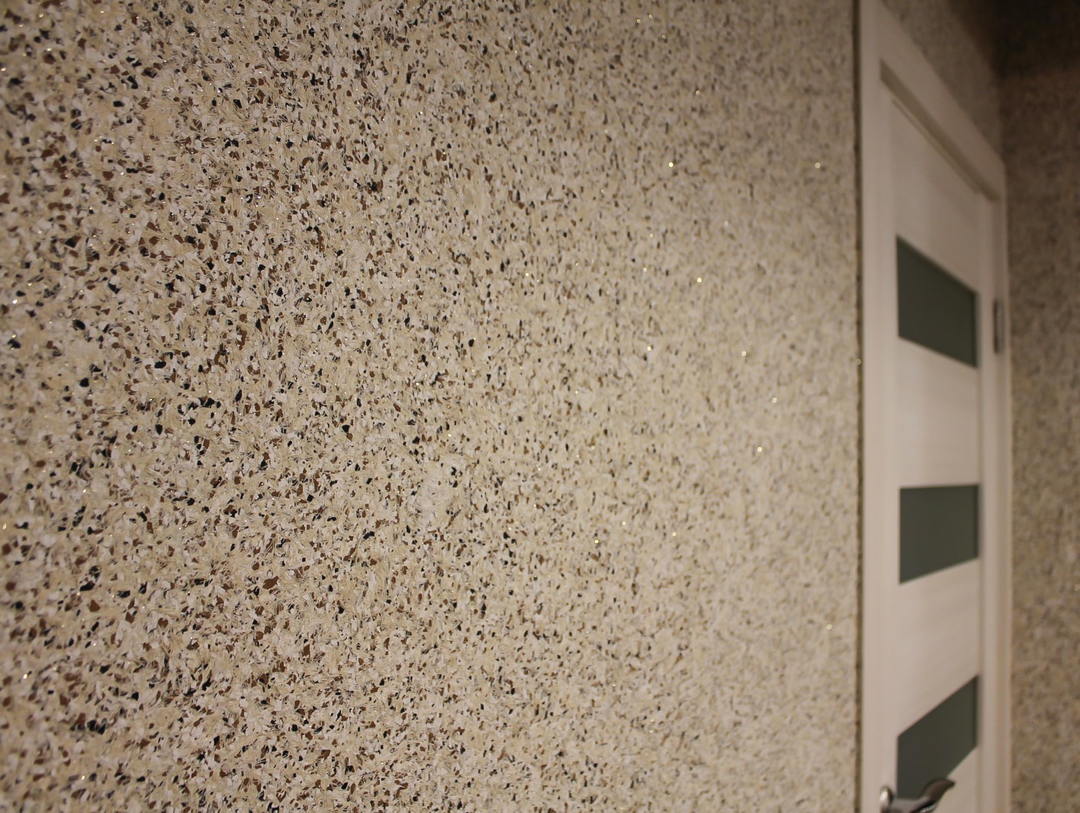
Liquid wallpaper is a safe and environmentally friendly product.
Depending on the main component, there are the following types of wallpaper, which differ from each other externally, to the touch and in price:
- Pulp is the cheapest option due to the low cost of the starting material. Their surface is slightly embossed, reminiscent of matte paper.
- Cotton fibers impart porosity and softness to the surface.
- Silk threads up to 6 mm long in the composition of the wallpaper add shine to them. The price depends on whether it is natural silk or artificial. Natural lasts for a long time and does not fade in the sun.
- In combined, cellulose with the addition of cotton and silk threads is used as the main raw material.
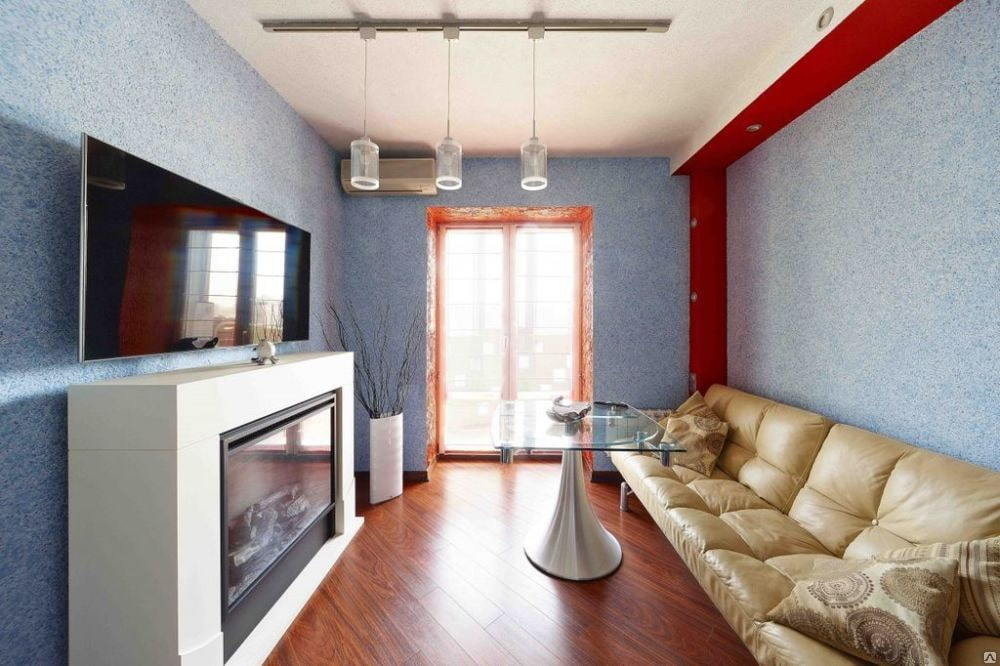
They are suitable for decorating a children's room and other living quarters, since they contain natural ingredients.
Additional Information. Natural materials of the coating make it breathable, thickness up to 4 mm gives them heat and sound insulation properties.

The coating does not emit harmful substances even when exposed to high temperatures.
Liquid wallpaper ideas in rooms
The good thing about decorative material is that it will harmoniously decorate any apartment and give the interior comfort. For inspiration, look on the Internet for how liquid photo wallpaper looks in the interior of rooms, there are many options of varying complexity.
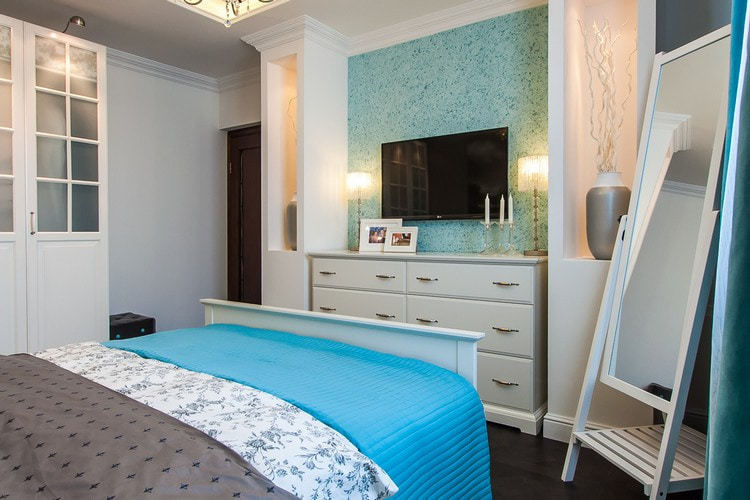
Liquid wallpaper is based on cellulose fiber or cotton, which is about 90 percent of the total composition.
Repair with their use can be performed not only by a specialist, but also by any person who knows how to work with a spatula. A beginner may initially have a higher material consumption when applying the plaster by hand. A special construction gun will distribute the mixture more evenly and reduce consumption.
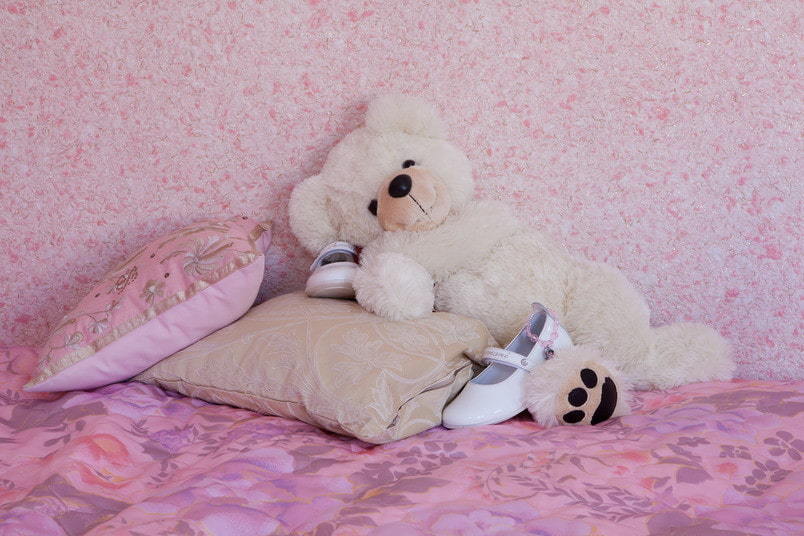
Antiseptics are added to increase the resistance to mold, mildew and bacteria on the surface.
Liquid wallpaper in the kitchen
Anyone who is determined to decorate the kitchen with cellulose pulp should consider the method of covering in the work area: either it is the treatment of wallpaper with a layer of varnish, or ceramic tiles instead. The fact is that the decorative coating does not tolerate contact with water, therefore it is not recommended to use it in the working area without applying a protective varnish layer. Please note that varnish changes the texture and properties of the coating. In general, liquid wallpaper is appropriate in the kitchen, since it does not absorb odors and is easy to clean.

The stains on them can be erased with an eraser or the damaged area can be renewed.
Zoning the kitchen space is easy to carry out using cellulose-glue mass: it does not require straight lines, it allows you to make a contrasting transition or a smooth gradient while preserving the texture.
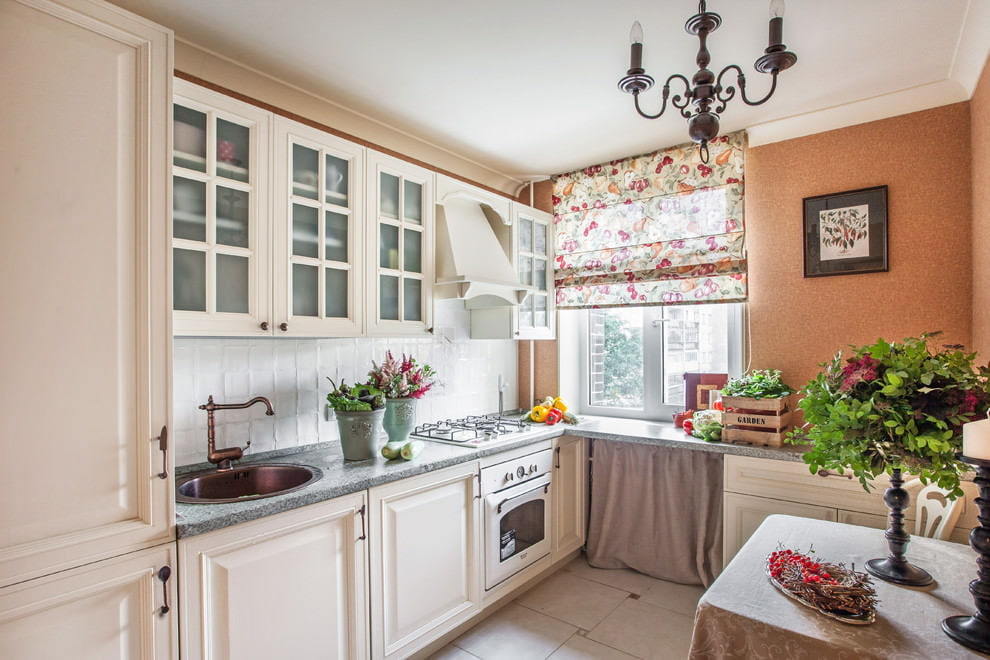
Bustilate, PVA, wallpaper glue, paste can be used as glue.
Several design options:
- In the kitchen studio, you can visually separate the entire area with the headset, even coating the ceiling.
- Highlight a large area or niche with color.
- On the wall opposite the headset, apply a large drawing: coffee cups, fruits, cake.
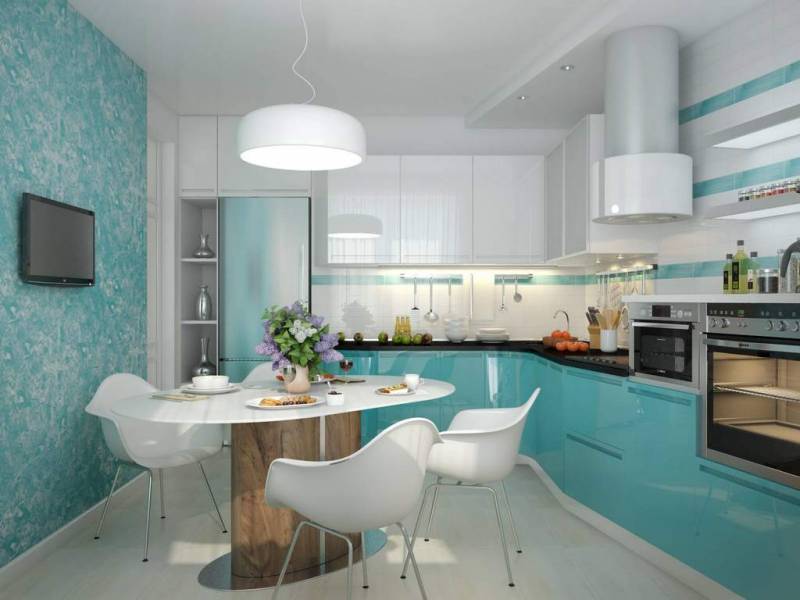
Additives exclusively for aesthetic effect and to give texture: beads, glitter, silk fibers, dye, flock, velor.
Liquid wallpaper in the living room
Most often, it is in the living room that it is possible to demonstrate all the beauty and brevity of this coating. At the same time, both a restrained classic style and a manifestation of imagination are possible. The easiest way is to apply a monochromatic coating, in this case, you can move the furniture at your discretion.
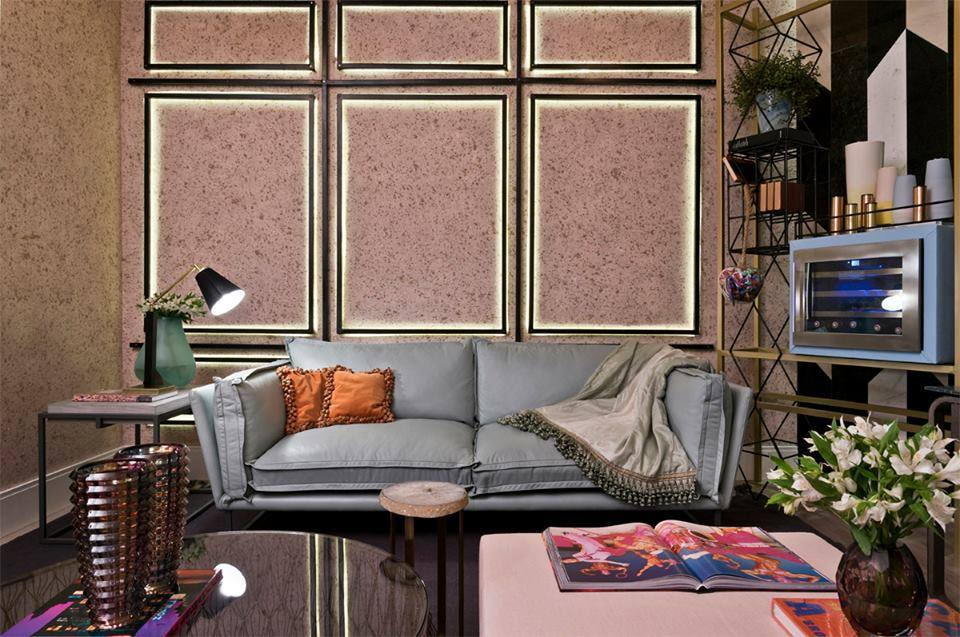
In the living room, you can use different methods of overlaying material, forming a pattern or unusual relief.
You can take advantage of the peculiarity of this type of coating and apply a full-fledged drawing on one of the walls, the principles of its application are given at the end of the article. If the hall has an irregular shape, ledges, arches, then decorating it with paper rolls will not be easy, it is more convenient to apply and level the plaster.
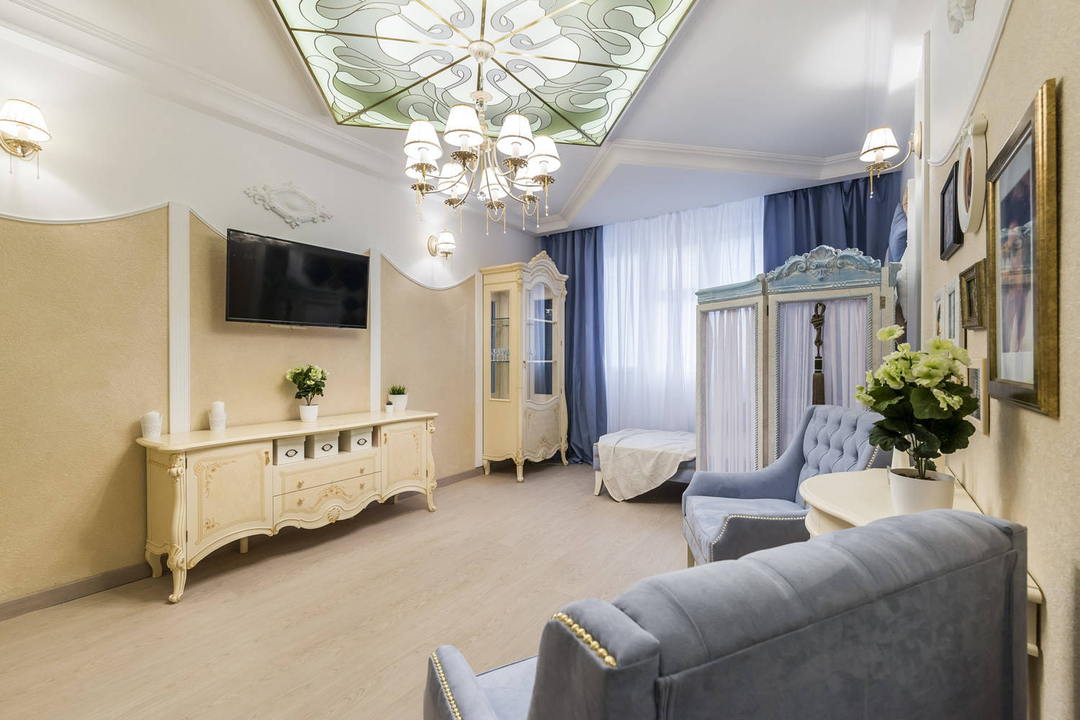
The coating is perfect for creating interiors in different styles.
Note. It is important to correctly calculate the wall areas and material consumption, the approximate amount of dry components is indicated on the package.
Liquid wallpaper in the children's room
Jokes about the fact that it would be good to asphalt a children's room are meaningful, since children do not need to spill something on the floor, smear it on the walls, tear it off or scatter it. For this reason, liquid wallpaper in a nursery is almost like asphalt on a wall:
- The painted area must be replaced without damaging the interior.
- Unlike rolls, the child has nothing to grab onto in order to pull and tear off a piece.
- Service life up to 15 years.

Safety and environmental friendliness of the material plays a decisive role in decorating a children's room.
In addition to these qualities, they are characterized by heat and sound insulation, harmlessness to health, which is a big plus for a nursery. In terms of design, there are more options here than in other rooms. You can draw a whole cartoon on the wall, your favorite full-length characters, floral motifs, marine life, a treasure map, and so on.
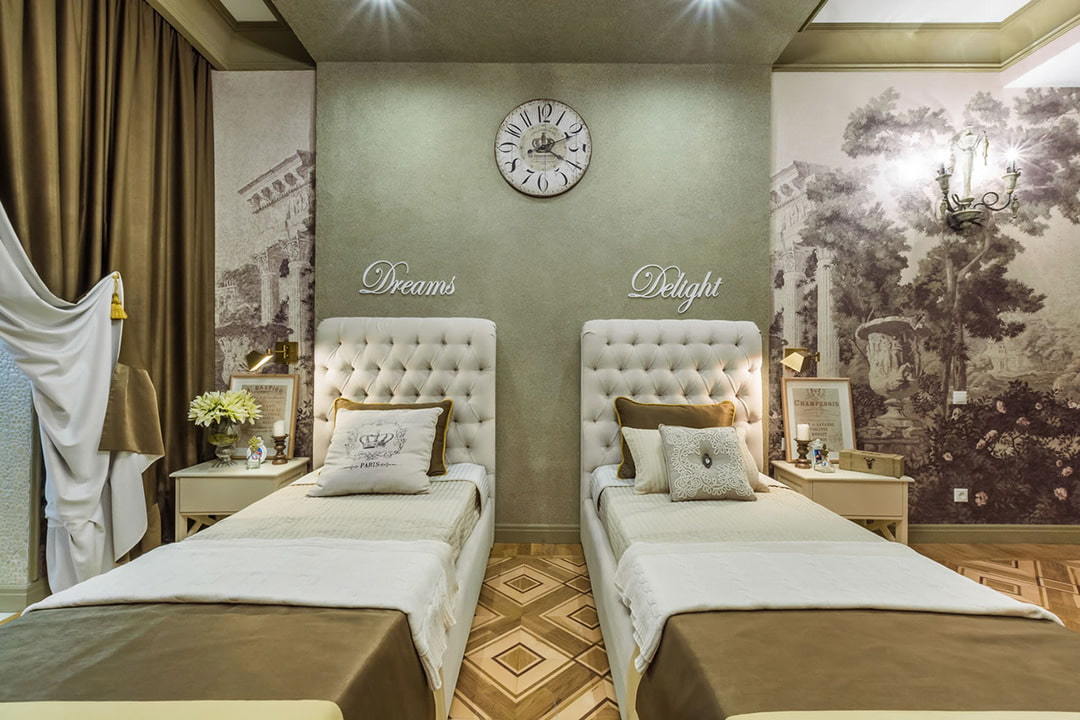
The soft and warm surface will decorate the children's room, and the varied application method allows you to reproduce various patterns or three-dimensional pictures.
Liquid wallpaper in the bedroom and other rooms
It is impossible to overestimate the coziness brought by liquid wallpaper in the bedroom. Headboard patterns, window or side table zoning and other uses bring the interior to life. If you add glitter to the mixture, it will flicker under artificial light.
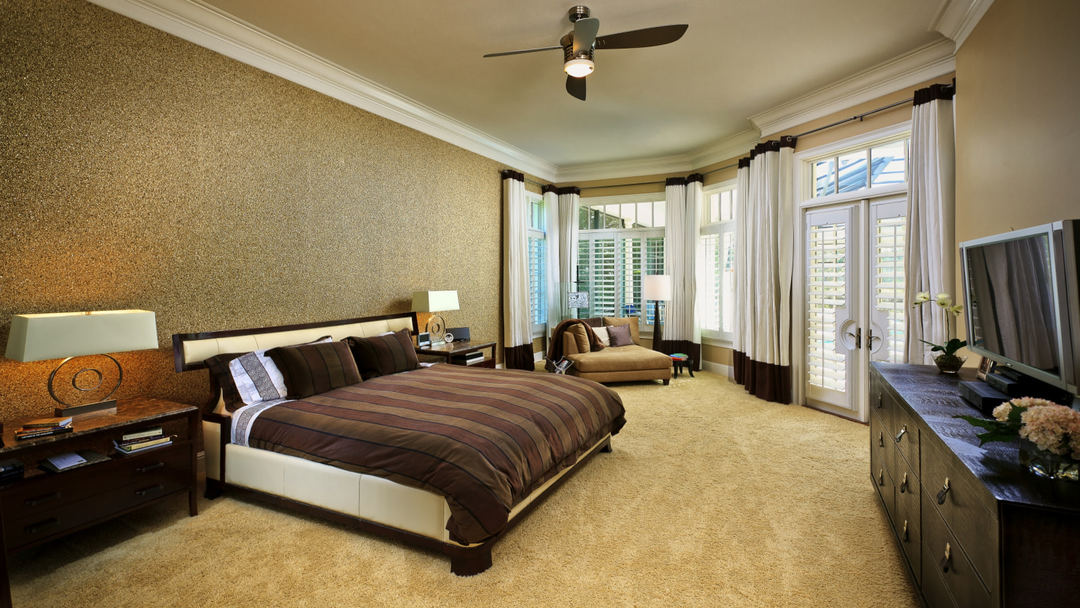
The warm, breathable surface creates a cozy atmosphere and is perfect for decorating a bedroom.
In addition to the main rooms, the finishing material is suitable for decorating the hallway and corridor. For a narrow room with a low ceiling, vertical contrasting lines are suitable, a wide one will refresh the decor of one of the walls with tall large flowers, for example, tulips. Most often, light colors are chosen, since there is no natural light.
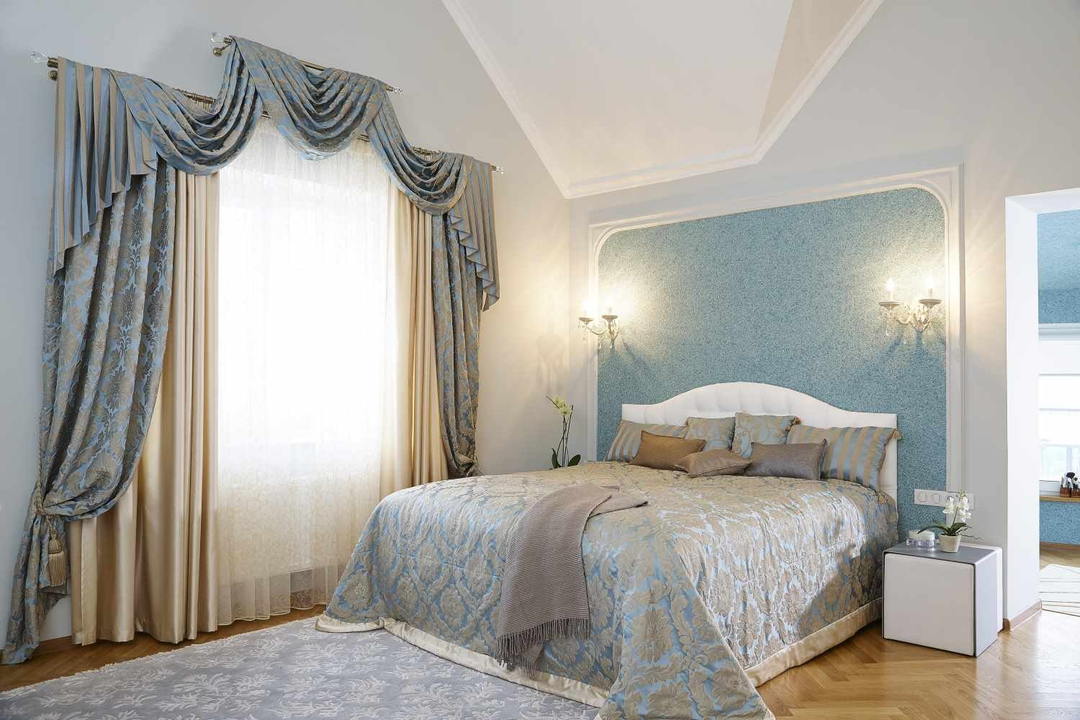
The composition of liquid wallpaper may include additional components for external decor, glitter or glass beads.
Additional Information. The use of cellulose mixtures in the bathroom is not recommended, as the material is not moisture resistant.
Choosing a color palette for liquid wallpaper
The color range depends on the illumination and area of the room; in addition, it should be taken into account that the palette of dry powders is not as wide as that of traditional roll products. The most common are light pastel colors. They are versatile, since the color can be adjusted in the process by adding color.
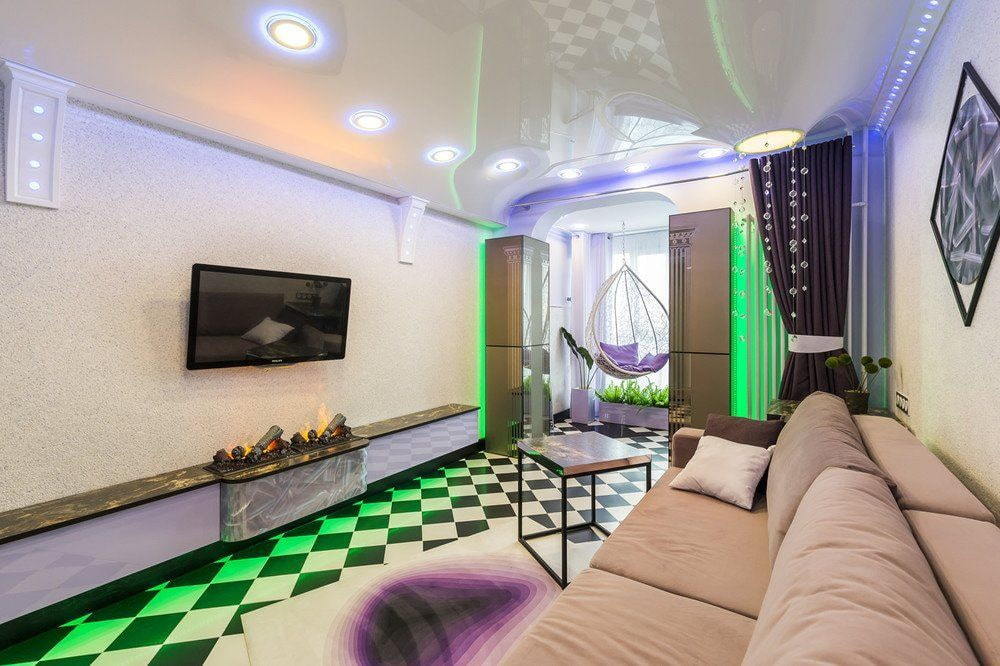
The required amount of pigment is dissolved while mixing the mixture.
The wet mass will have a brighter color; when dry, the intensity will decrease. In order to make a mistake with the tone, use a computer tinting in a hardware store. To do this, the required color is selected in the catalog, after which the computer calculates in what proportion the color should be added.
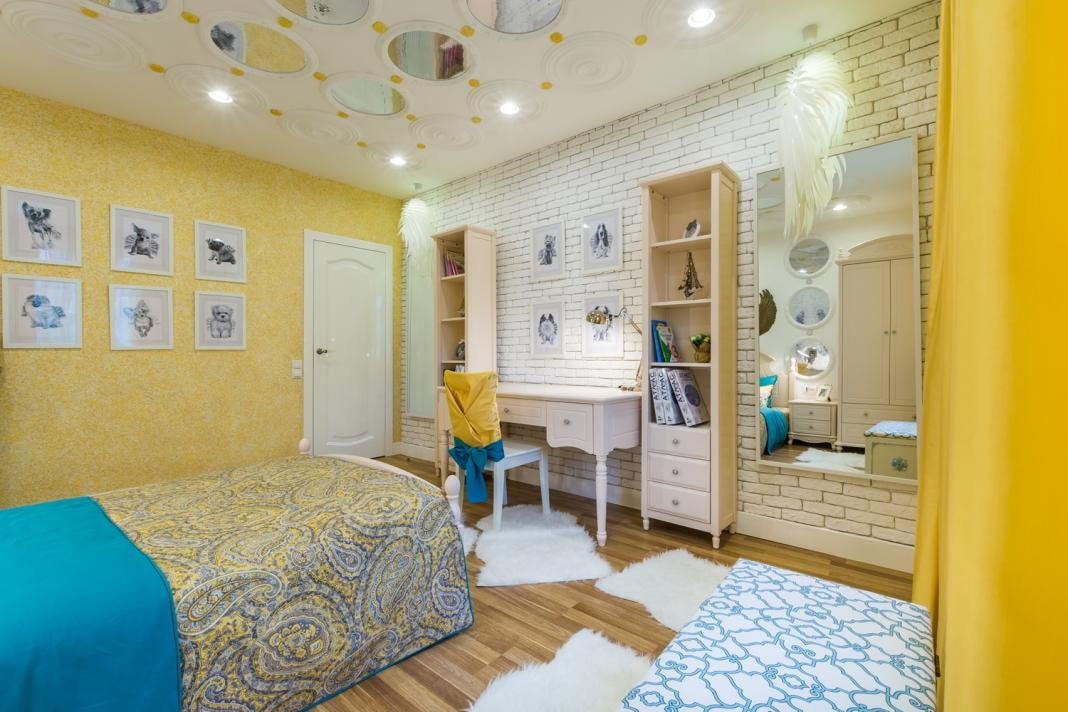
A good solution for decorating the northern room of the house, yellow liquid wallpaper will compensate for the lack of sunlight.
Making drawings with liquid wallpaper in the interior of rooms
The ability to apply a picture is the highlight of this finishing material. You can attract professionals or do everything yourself, for this it is not at all necessary to have artistic skills, it is enough to cut out stencils or choose geometric shapes.
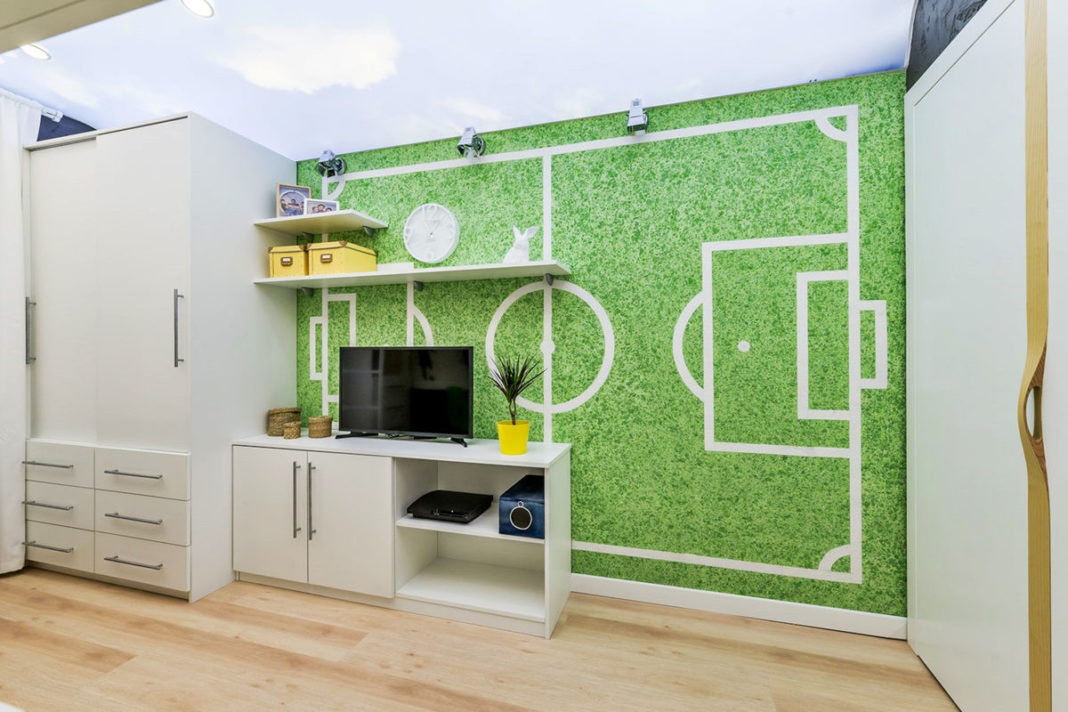
Green has a beneficial effect on a person, helps to relax and gives a positive attitude.
Work order:
- Primer the walls to increase adhesion. It is desirable that the base be white, this excludes obtaining different tones of the finished drawing.
- Prepare the mixture according to the instructions, leave it to infuse for 10-12 hours.
- If you can draw, sketch the drawing on the wall with a pencil, if you're afraid to make a mistake, use a stencil. Pre-print the selected pattern and prepare a template from the finished sketch, fill it with a mixture, work carefully along the contour so that the lines remain clear and the colors do not mix. The composition is applied using a trowel and a spatula, first, the elements that are not adjacent to each other are filled, after they dry, they move to adjacent ones.
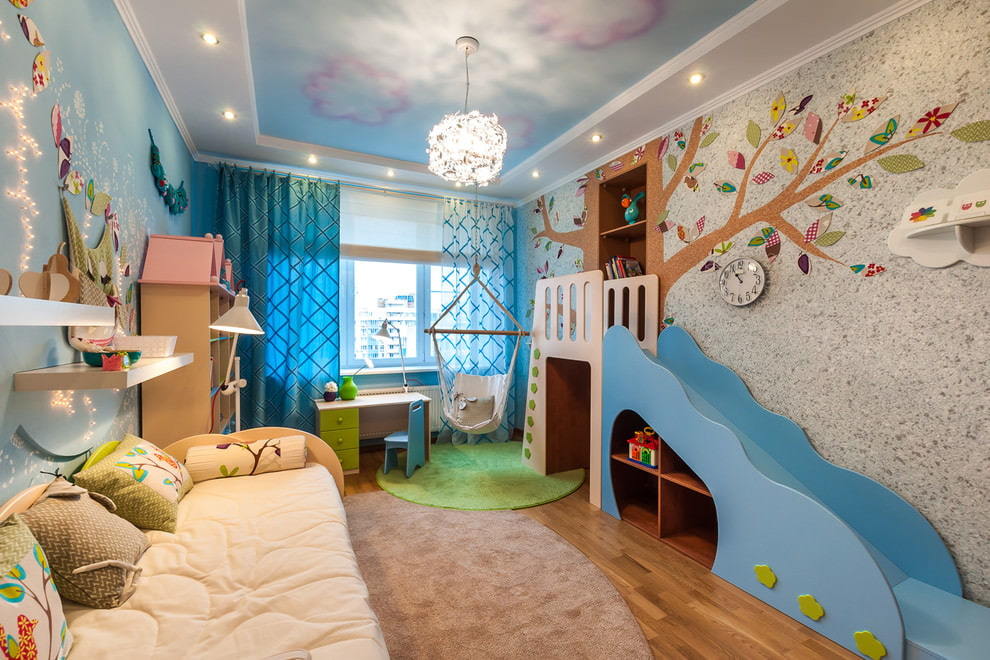
Shades can be different, go well with white, beige and blue tones.
Photo of the design of liquid wallpaper in the interior of the room
Difficult to decorate repairs with arches and niches can be easily implemented with cellulose plaster. Two warm tones create a discreet style.
The soiled lower part is hidden by dark stripes closer to the floor, this solution is suitable for the corridor and hallway.
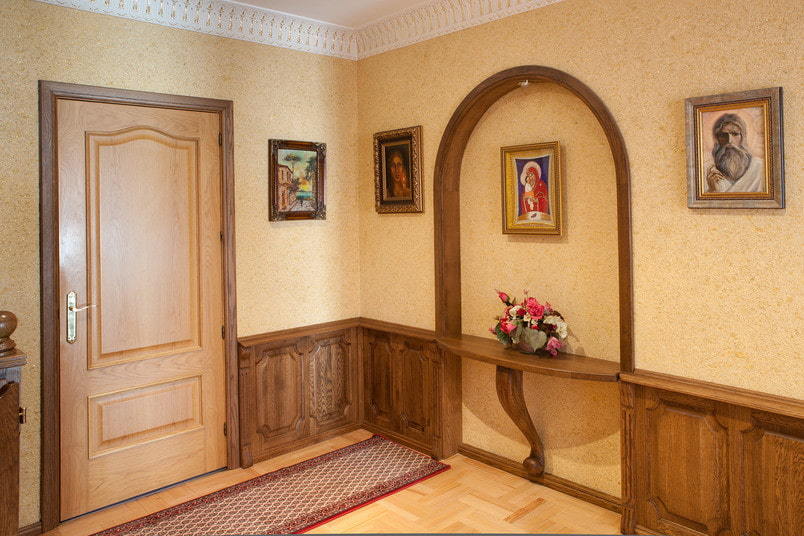
A cream or beige shade will be a good solution for interior decoration in a classic style.
Large flowers in the interior are almost a win-win option. A simple sketch and two contrasting colors ensure laconicism.
Full-fledged wall-to-wall paintings withstand the style of the room. Colors do not fade, the surface can be vacuum cleaned.
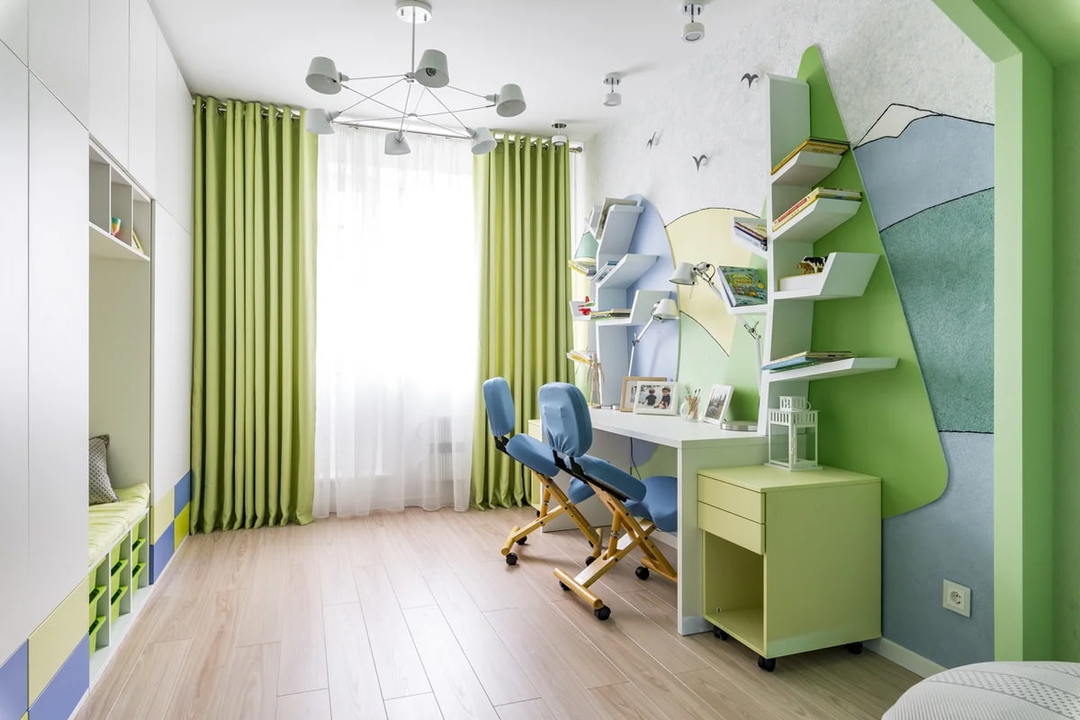
Due to the structure of liquid wallpaper, the texture will look interesting on a blue background, forming irregularities similar to a water surface.
Practicality and durability are qualities for which you should look closely at liquid wallpaper, in addition, a person with imagination can embody any ideas during repairs. Despite the relative high cost, the finishing material is popular because it has a long service life, is easy to maintain and apply.
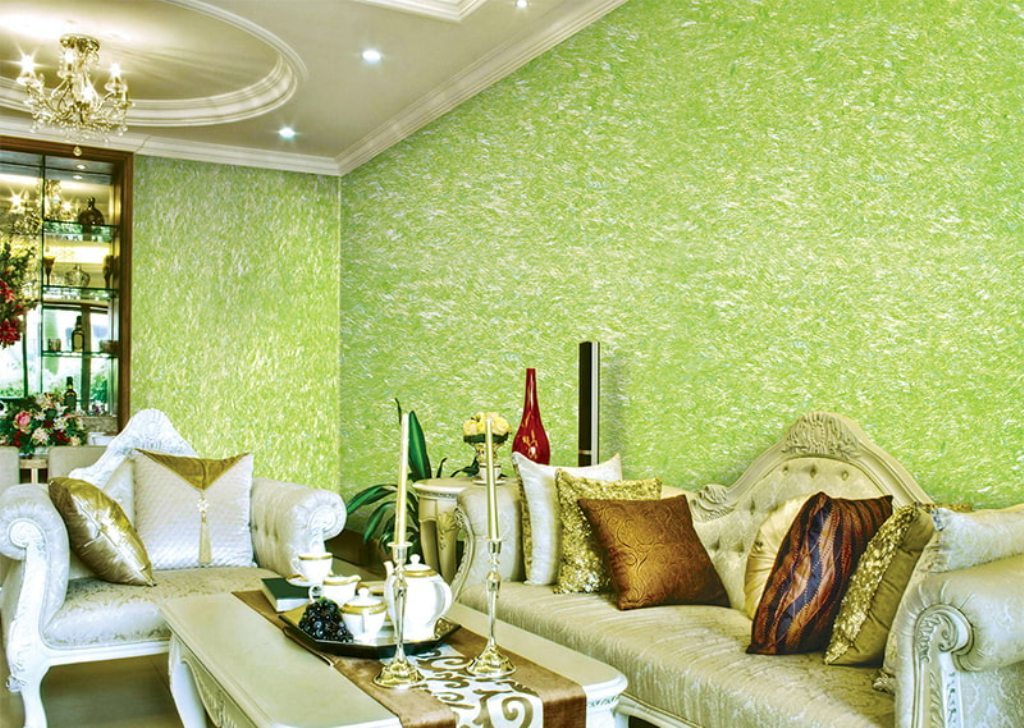
A combination of different shades of green, such as olive and pistachio, will look interesting in the interior.



